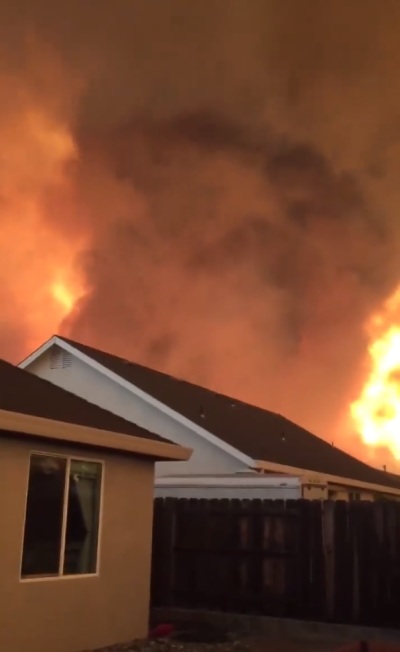Wildfire Ravages California; Bethel Church, Victims Say 'God's Got Us'
How it all got started, conditions that have produced 'firenados'
The Carr fire began one week ago when a vehicle suffered a mechanical failure and set the ground ablaze and spread rapidly, according to local officials. The blaze occurred at the intersection of Highway 299 and Carr Powerhouse Road in Whiskeytown, just outside of Redding, near Whiskeytown National Park.

By Wednesday and Thursday, the fire was growing so quickly that Highway 299 had to be closed and nearby areas were placed under mandatory evacuation.
Ultra hot conditions have worsened the situation as strong gusts of wind escalated the fire, causing it to double in size. The conditions have been so severe that a localized weather system has been created; though they are not tornados, what appear to be "firenados" have been spotted across the region, swirling with intensity. Unlike the strong winds typical in other California wildfires, the winds in Redding are of a different variety.
Exacerbated by triple-digit temperatures that have peaked in the 110s in the past week, the extremely hot smoke rises and creates a ferocious updraft, a force so potent it starts to rotate. While most fire swirls are relatively small, large ones have been seen stretching to the sky, terrifying residents and atmospheric observers.
"The Carr Fire is unprecedented in that strong winds were not driving the fire, but rather the plume rotated and intensified creating its own weather. For a fire to burn into Redding like that is very unique," said Professor Craig Clements, director of the fire weather research lab at San Jose State University, as reported by Mercury News.
Likewise, Neil Lareau, assistant professor of atmospheric science at the University of Nevada at Reno, commented that the fire tornado was a "[f]ull-on rotating convective column. Scary as hell."
Smoke from the wildfire is so thick it can be seen from outer space and it is blanketing portions of the state.
California Governor Jerry Brown declared a state of emergency, a request President Donald Trump approved Saturday. The president's action allows federal agencies to dispense disaster response equipment and resources in addition to U.S. military personnel and Defense Department assets.




























